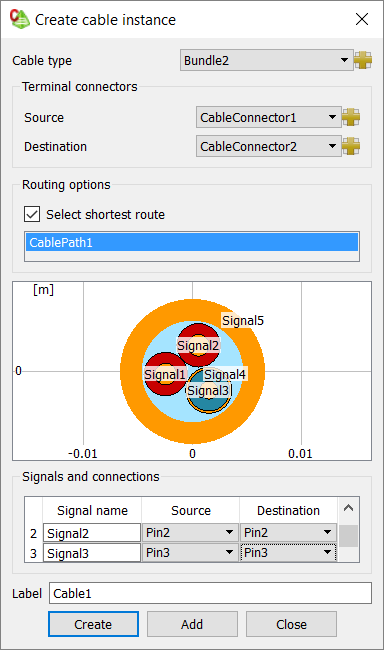Defining a Cable Instance
A cable instance is a single cable (for example, ribbon, cable bundle, coaxial cable) with its cable connectors that is routed along a cable path.
-
On the Cables tab, in the
Create instance group, click the
 Cable instance icon.
Cable instance icon.

Figure 1. The Create cable instance dialog.
-
From the Cable type
drop-down list, select one of the following options:
- To specify a predefined cable, select the cable you want to use.
- To specify a cable, which is not yet defined in the model, click the
 icon to define a cable path.
icon to define a cable path.
-
Specify the start connector and end connector for the cable.
- Under Terminal connectors, from the Source drop-down list, select the start connector for the cable.
- Under Terminal connectors, from the Destination drop-down list, select the end connector the cable.
Specify the cable path along which the cable instance is routed.
-
Under Routing options, select one of the
following:
- To use a specific cable path, clear the Select shortest route check box. From the drop-down list, select the cable path you want to use.
- To use the cable path with the shortest route between the specified start connector and end connector, select the Select shortest route check box.
For each conductor (signal) in the cable instance, specify the pins of the cable connector to which the conductor is connected.
Note:
- Each conductor in the cable instance is a signal.
- A signal is connected to the pins of a cable connector.
- Under Signals and connections, select the Signal name, Source (start pin) and Destination (end pin) of the connector (specified in Step 3) to which the signal is connected.
- In the Label field, add a unique label for the cable instance.
- Click Create to create the cable instance and close the dialog.